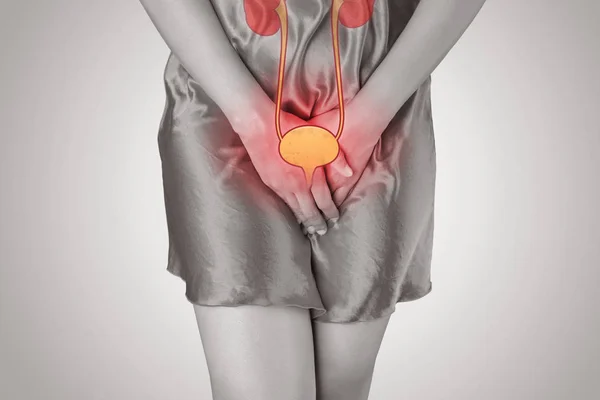I’ll start by saying that tampons have revolutionized the way we manage our periods. They provide convenience, discretion, and freedom to go about our daily lives without worrying about leaks. But, like any other product, tampons also come with their fair share of side effects. In this article, I’ll look into the potential risks and drawbacks of tampon use, and why it might be beneficial to consider using multiple types of period products.
From the environmental impact of tampon waste to the risk of toxic shock syndrome, we’ll explore the facts and provide you with the information you need to make an informed decision about your menstrual health.
Contents
Understanding Tampons Side Effects

When it comes to using tampons, it’s important to be aware of the potential side effects. While tampons are generally considered safe when used properly, they do come with a few risks that you should know about. Here’s what you need to understand about tampons side effects:
- Toxic Shock Syndrome (TSS): One of the most well-known risks associated with tampon use is toxic shock syndrome. TSS is a rare but potentially life-threatening condition caused by toxins released by certain types of bacteria. It can occur when tampons are left in for extended periods, allowing bacteria to grow. Symptoms of TSS include sudden fever, rash, low blood pressure, and organ damage. To reduce the risk of TSS, it’s important to change tampons regularly and avoid wearing them overnight.
- Bacterial Infections: Tampons can also increase the risk of bacterial infections, such as bacterial vaginosis. This is because tampons can disrupt the natural balance of bacteria in the vagina, allowing harmful bacteria to multiply. Symptoms of bacterial infections include unusual discharge, itching, and discomfort. To minimize the risk of bacterial infections, it’s essential to change tampons frequently and maintain good personal hygiene.
- Chemicals and Allergies: Some tampons contain chemicals, such as dyes and fragrances, that may cause allergic reactions in some individuals. Allergic reactions can range from mild irritation to more severe symptoms like itching, swelling, or difficulty breathing. If you experience any unusual reactions after using tampons, it’s important to stop using them and consult a healthcare provider.
- Long-term Impact: While the short-term side effects of tampon use are well-documented, there is still limited research on the long-term impact. As with many health-related issues, it may take years of study and advocacy to gain a comprehensive understanding of the potential long-term side effects of tampon use.
Common Side Effects of Tampons
1. Irritation and Redness
One of the common side effects of using tampons is irritation and redness in the vaginal area. This can be caused by the materials in the tampons, especially scented ones, which can disrupt the natural pH balance of the vagina. When the pH balance is disturbed, it can lead to an overgrowth of bad bacteria, causing irritation, itching, infections, and even allergic reactions. To avoid this, it is recommended to opt for unscented tampons and change them regularly to maintain hygiene and prevent irritation.
2. Vaginal Dryness
Another side effect that some individuals may experience when using tampons is vaginal dryness. This can happen when tampons are left in for too long or when high-absorbency tampons are used on lighter flow days. Vaginal dryness occurs when there is reduced lubrication in the vagina due to the tampon absorbing the natural moisture. To prevent this, it is advisable to use tampons with the appropriate absorbency for your flow and change them every 4-6 hours. Alternatively, using alternative menstrual products like menstrual cups can be beneficial, as they are known to cause less vaginal dryness.
3. Allergic Reactions
Some individuals may have allergic reactions to certain materials or chemicals found in tampons. Fragranced tampons, in particular, can contain chemicals that may change the vaginal pH or cause allergic reactions, leading to swelling, pain, or itching. To avoid this, it is recommended to opt for fragrance-free tampons or consider using hypoallergenic menstrual cups made of medical-grade silicone, which are less likely to cause allergic reactions. If you experience any discomfort, pain, or itching after using tampons, it is essential to stop using them and consult with a healthcare provider.
Serious Side Effects of Tampons

1. Toxic Shock Syndrome (TSS)
Toxic Shock Syndrome (TSS) is a rare but serious side effect of tampon use that can lead to life-threatening complications. TSS is caused by an overgrowth of bacteria, often Staphylococcus aureus, which releases toxins into the bloodstream. Although TSS was initially associated with tampon use, it is essential to note that anyone, regardless of age or gender, can develop TSS.
2. Bacterial Infections
Using tampons can put you at a higher risk of developing bacterial infections, such as bacterial vaginosis, cervicitis, or urinary tract infections (UTIs). Tampons can disrupt the natural pH balance of the vagina, creating an environment where harmful bacteria can thrive. Additionally, using scented tampons can further irritate the vaginal area, increasing the risk of infection.
Tips for Avoiding Side Effects
1. Choose the Right Tampon Size
When it comes to tampons, choosing the right size is crucial to avoid potential side effects. Each person’s flow is unique, so finding the tampon size that works best for you is essential.
2. Change Tampons Regularly
One of the most important things to remember when using tampons is to change them regularly. Leaving a tampon in for an extended period can increase the risk of developing toxic shock syndrome (TSS), a rare but potentially life-threatening condition.
3. Use Tampons Alternately with Pads
Another tip to consider for avoiding side effects is to use tampons alternately with pads. This allows your body a break from tampon use and gives your vaginal area a chance to breathe.
Conclusion
In this article, I have discussed the potential risks and drawbacks of using tampons. I have highlighted the environmental impact of tampon waste and explored the potential health risks associated with tampon use, such as toxic shock syndrome, bacterial infections, and allergic reactions. It is important to consider alternative period products and adopt a diversified approach to menstrual care.
Frequently Asked Questions
Do tampons cause gas?
Vaginal gas can occur when using tampons, similar to air being forced into the vaginal canal during sexual intercourse.
Are there any side effects of using tampons?
Using tampons can carry the risk of toxic shock syndrome (TSS) if certain types of bacteria overgrow and release toxins into the bloodstream. This is rare but can lead to serious infections.
I am a medical student with experience and interest in Women’s health and well-being.